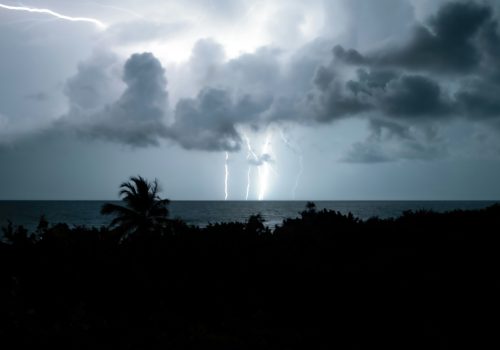Whales are known for their haunting and mesmerizing songs that echo through the oceans, captivating researchers and enthusiasts alike. But what exactly drives these majestic creatures to sing? One theory suggests that whales use their vocalizations to communicate with one another over long distances, helping them coordinate movements, find food, and navigate their environment. Another school of thought proposes that whale songs play a crucial role in mating rituals, with male whales using their elaborate melodies to attract and court potential mates. The complexity and variation in these songs could serve as a form of competition among males, showcasing their health and genetic fitness to prospective partners. Research has also indicated that whales may sing to establish their presence and territory, much like birdsong in terrestrial animals. By emitting specific vocalizations, whales could be signaling their identity, group affiliation, and warning off rival individuals or species.
The Science Behind Whale Song
Whale songs are not merely random or instinctual noises. They exhibit a level of structure and organization that suggests a high level of intelligence and intentionality. Studies have shown that whales, particularly species like humpback whales, possess specialized vocal structures that allow them to produce intricate sounds and melodies. Furthermore, researchers have discovered that whales are capable of learning and imitating songs from other individuals within their population, leading to the transmission of cultural traditions and dialects among different groups of whales. This ability to pass down songs through generations highlights the sophisticated social dynamics at play within whale communities.
The Anatomy of Whale Vocalizations
Whales produce sounds using a complex anatomy designed for underwater acoustics. Unlike humans, who use vocal cords, whales rely on structures called phonic lips located in their nasal passages. These phonic lips create vibrations that resonate through the whale’s skull, amplifying the sound before it travels through water. This unique mechanism allows them to produce a wide range of frequencies and volumes necessary for their songs to travel over vast oceanic distances.
Cultural Transmission Among Whales
The concept of cultural transmission in whales is particularly fascinating. Much like humans, certain whale populations have unique song patterns that they pass down, which can evolve over time. For example, researchers have observed that humpback whale songs can change significantly over a few years, with new elements gradually replacing old ones. This evolution is a dynamic process, often influenced by interactions with other whale groups, showcasing a form of cultural exchange that is rare in the animal kingdom.
The Role of Whale Songs in Communication
Whale songs serve as a vital communication tool, often traveling for hundreds, if not thousands, of miles across the ocean. This long-distance communication is crucial for the coordination of activities such as feeding and migration.
Navigating Vast Oceans
Whales are known to migrate thousands of miles between feeding and breeding grounds. Songs likely play a crucial role in this process, helping whales maintain contact with each other over long distances. For example, the low-frequency sounds produced by blue whales can travel across entire ocean basins, acting as a navigational aid and a means of keeping groups together during migrations.
Social Structures and Interactions
Within whale pods, songs help to reinforce social bonds and hierarchies. Certain calls might signal the presence of food, while others could indicate the approach of predators. These vocalizations are essential for maintaining the cohesion and survival of whale communities. In this sense, whale songs are an integral part of their social fabric, much like language is for humans.
Whale Songs and Mating Rituals
One of the most widely accepted theories about why whales sing revolves around mating rituals. Male whales, particularly humpbacks, are the primary singers, using their songs as a serenade to attract females.
Courtship Serenades
Whale songs can last for hours and are often repeated in cycles. The complexity and duration of these songs are thought to play a role in sexual selection. Females may prefer males with more elaborate and longer songs, as these could indicate better overall health, stamina, and genetic fitness.
Competition Among Males
In addition to attracting females, songs may also serve as a competitive tool among males. By showcasing their vocal prowess, males can assert dominance over rivals, deterring them from approaching potential mates. This form of acoustic competition is akin to the visual displays seen in birds and other animals.
Territorial Claims and Identity
Just as birds use songs to mark their territory, whales may use specific vocalizations to establish and defend their space in the ocean.
Acoustic Boundaries
By singing, a whale can signal its presence to others, effectively drawing acoustic boundaries around its territory. This can be particularly important in feeding areas where resources are limited, and competition is fierce. The ability to claim a territory through song helps minimize physical confrontations, which can be costly in terms of energy and risk of injury.
Individual and Group Identification
Whale songs may also convey information about the identity and affiliation of the singer. Each whale’s song can have unique elements that distinguish it from others, allowing for individual recognition. This capacity for identification is crucial in maintaining social structures and alliances within and between pods.
The Impact of Human Activities on Whale Song
Unfortunately, human activities such as underwater noise pollution, sonar use, and ship traffic have been shown to disrupt whale communication and behavior. The increasing levels of ocean noise can interfere with whales’ ability to hear and produce their songs effectively, leading to potential negative consequences for their survival and reproductive success.
Underwater Noise Pollution
The ocean is becoming an increasingly noisy place, and this noise pollution poses a significant threat to whales. Ships, industrial activities, and naval exercises all contribute to a cacophony that can drown out the subtle nuances of whale songs. This interference can lead to disorientation, stress, and even strandings, as whales struggle to navigate and communicate in a noisy environment.
Sonar and Its Effects
Naval sonar, used for detecting submarines and other underwater objects, operates at frequencies that can severely disturb marine life. Whales exposed to sonar have been observed to change their vocalization patterns, dive deeper, and even strand themselves in an effort to escape the noise. This disruption not only affects communication but can also have dire consequences for their health and well-being.
Conservation Efforts and Future Directions
Conservation efforts are crucial in protecting the acoustic environments of whales and ensuring that they can continue to communicate through their enchanting songs. By understanding the reasons behind why whales sing and the significance of their vocalizations, we can appreciate these marine giants on a deeper level and work towards safeguarding their habitats for future generations.
Protecting Acoustic Habitats
To mitigate the impact of noise pollution, several measures can be implemented. Shipping lanes can be rerouted away from critical whale habitats, and speed limits can be enforced to reduce noise levels. Additionally, quieter ship technologies are being developed to minimize acoustic disturbances.
Legal and Regulatory Frameworks
International agreements and regulations play a vital role in protecting whales from harmful human activities. Organizations such as the International Whaling Commission (IWC) and regional conservation bodies work towards establishing guidelines and policies that help preserve marine environments and ensure sustainable human practices.
Public Awareness and Education
Raising public awareness about the importance of whale songs and the threats they face is essential for driving conservation efforts. Educational programs and outreach initiatives can help foster a sense of stewardship for the ocean and its inhabitants. By engaging communities and stakeholders, conservationists can build a broad coalition to advocate for policies that benefit both whales and people.
The Fascinating World of Whale Songs
Whale songs are a testament to the complexity and beauty of the natural world. They remind us of the interconnectedness of life on Earth and the importance of preserving the delicate balance of our ecosystems. By continuing to study and protect whales and their songs, we not only gain insights into these magnificent creatures but also into the broader health of our planet. Whether it’s through advanced research, innovative conservation strategies, or simply sharing the wonder of whale songs with others, we all have a role to play in ensuring that these oceanic symphonies continue to echo across the seas for generations to come.




